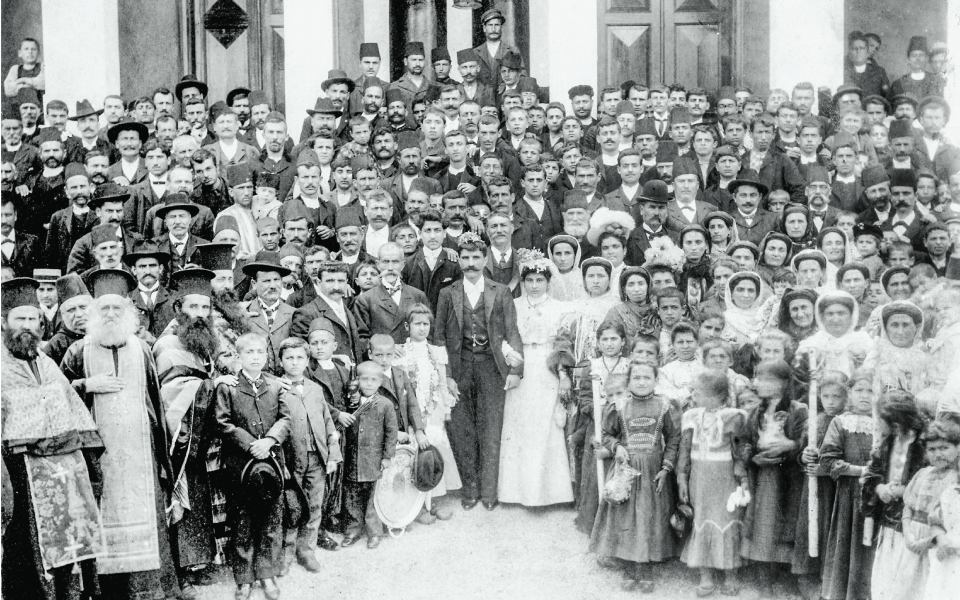
1904
WEDDING
If there is one image that captures the elegance and splendor of the marriage ritual on Kastellorizo, it is this photograph from the wedding of Emmanuel Kouttoupés and Evdokia Spyridi in 1904. The traditional female costume is juxtaposed with ornate Edwardian outfits among the females, both young and old, while the Ottoman fez, tieless buttoned shirts and vrákes (breeches) contrast with Western suits and neckties among the males.
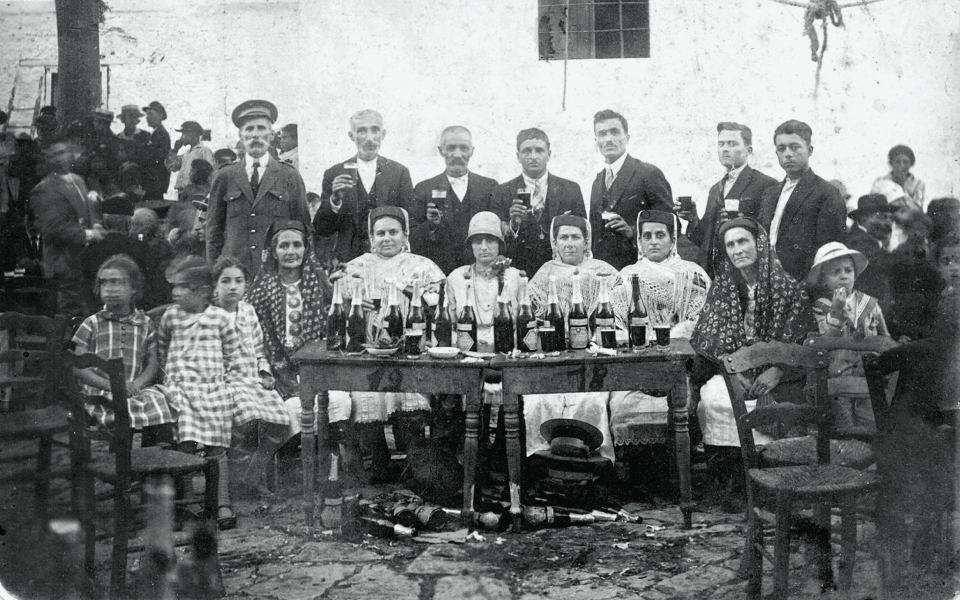
1926
FEAST DAY REVELRY
As in all Greek communities, feast days were, and still are, celebrated communally with considerable gusto. Despite Kastellorizo’s strict social customs which otherwise excluded pubescent females from social interaction until marriage, males and younger and older females engaged freely in the celebration of the major feast days of the Orthodox calendar, as this photo depicts.
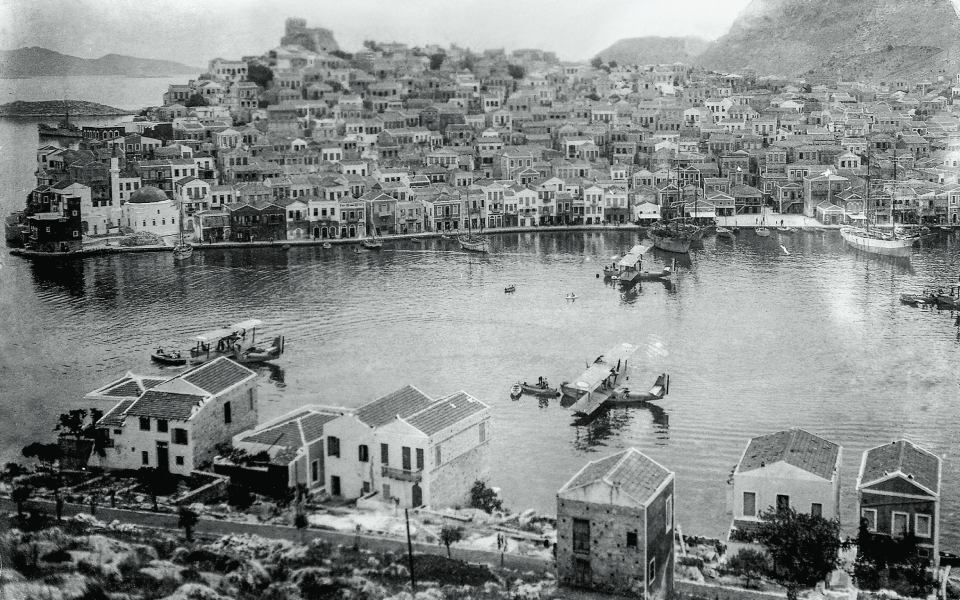
1931
LANDING ON WATER
A harbor that was once crammed with two and three-masted ships is instead a busy stopover port for Air France and Imperial Airways seaplanes on their flights to and from the Near and Far East. Successive periods of occupation are revealed by the juxtaposition of the Italian headquarters building at the extreme left with the island’s 18th-century mosque, which catered for the small Muslim population until 1913. The mosque, which underwent restoration work, now houses one of the island’s museums.
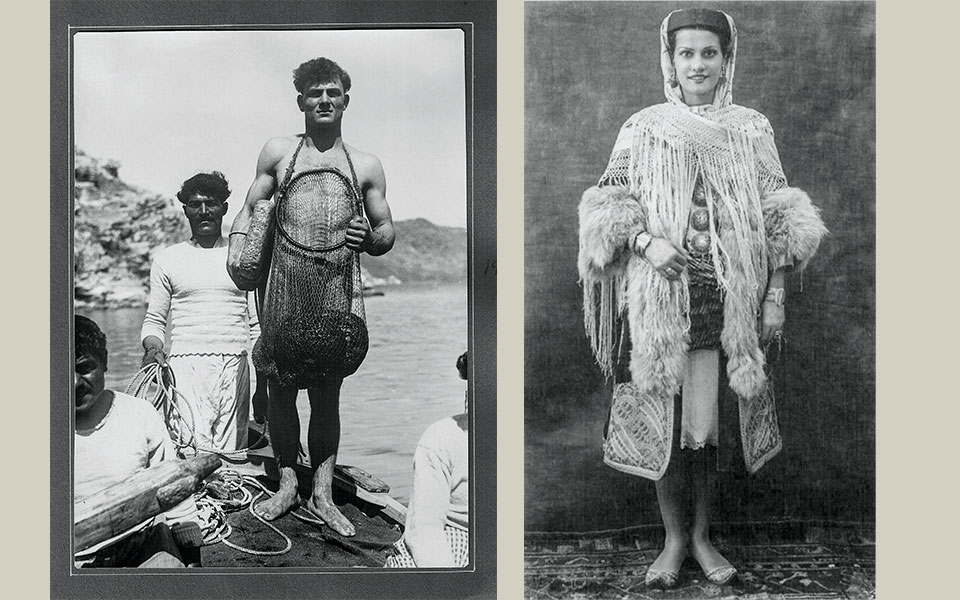
Left: 1931, SPONGE DIVING
Kastellorizo’s economic zenith in the mid-19th century was, in large part, attributable to Ottoman liberality, which permitted minimal tax obligations and financial self-regulation. One activity which was of particular attraction during this period was sponge diving, mainly off the Syrian coast, an industry that experienced a limited revival on the island in the early 1930s, when this photograph was taken.
Right: 1935, THE BRIDE
This photograph of young bride Evangelia Palaiou (née Koutsoukou) is revealing of the ornate and composite nature of Kastellorizo’s bridal costume. Over a long cotton shirt held together by five elaborate chased silver or gold pinned boúkles (brooches), a silk kavadi (kaftan) was layered over a baggy trouser, bound low across the hips with a long silk belt, or zosma. Over these was worn a richly embroidered and fur-lined velvet coat of either short or extended length. The outfit was completed by a large silk mandili (headscarf) to cover a popazi (headpiece), a fringed shawl, and gold embroidered kountoures (slippers).
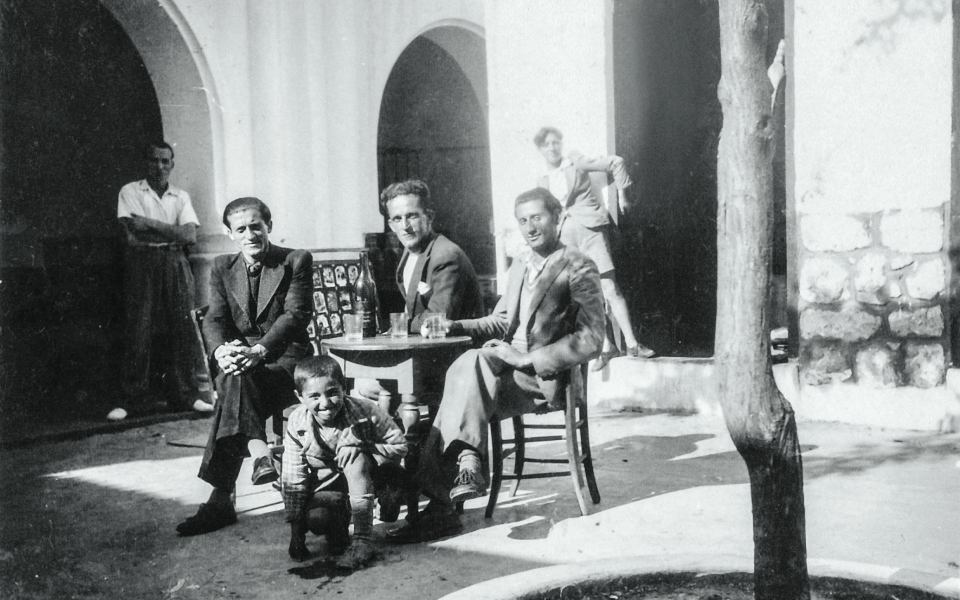
1938
COFFEE BREAK
Despite Kastellorizo’s economic and social decline in the early decades of the 20th century, there was always time for rest and relaxation in the town’s cafés. Here, three young men enjoy a quiet conversation at the shaded café behind the newly built mercato, or market. It is worth noting that the three men pictured here would all emigrate to Australia within a few short months.
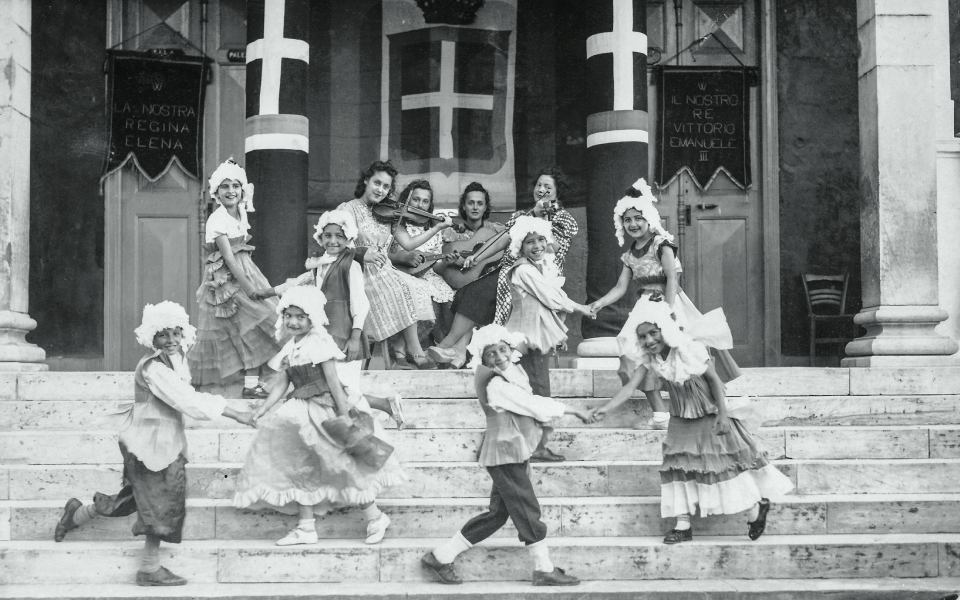
1940
SCHOOL CONCERT
With war raging across Europe, Kastellorizo’s Italian occupiers mandated patriotic displays from the island’s declining population. The Santrape School building is seen here draped in Italy’s national colors, while banners dedicate the performance to Italy’s King and Queen.
The children, too, are wearing Italian costumes and performing a provincial Italian dance.










